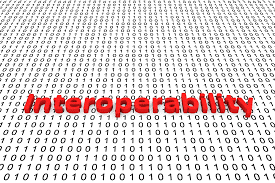Uniform interoperability for health information exchange (HIE) will revolutionize the medical industry through improved care, more complete Patient Health Information (PHI), lower cost from duplicate testing at the care provider admission and evaluation phase.
However, making healthcare data interoperable across hundreds of thousands of care organizations has been dramatically improved by HIEs which help simplify the goal of national interoperability.
An HIE is an organization that helps providers electronically share patient data to deliver improved patient-centered care.
Statewide and regional HIEs that facilitate standardized data exchange between care organizations should make national interoperability more attainable, as they help break down the challenge into smaller, more manageable pieces.
Current regulations aim to standardize patient data exchange for national interoperability, but complying with these regulations can be costly and time-consuming if a care organization tackles them on their own. HIEs can provide massive cost-savings to care organizations through shared health IT services. According to a study published in Health Affairs, most state and local health information exchanges (HIEs) are supporting a vast number of services and are developing connections to each other and national networks in preparation for the Trusted Exchange Framework and Common Agreement (TEFCA).

